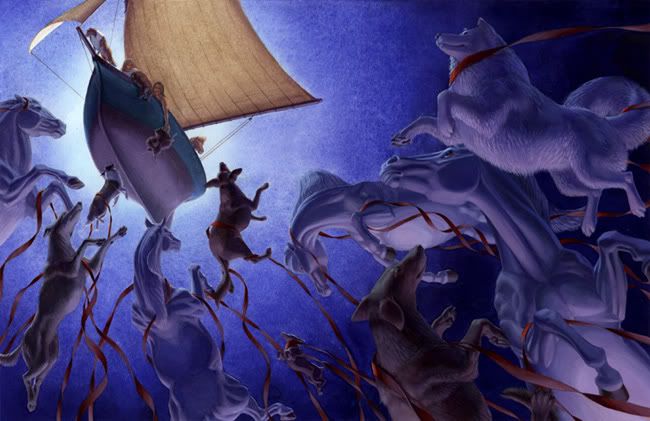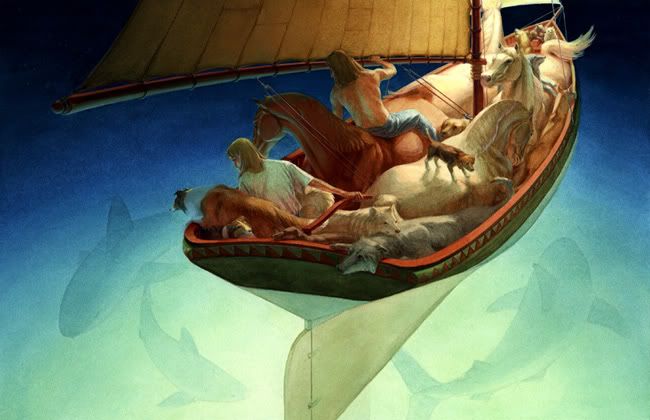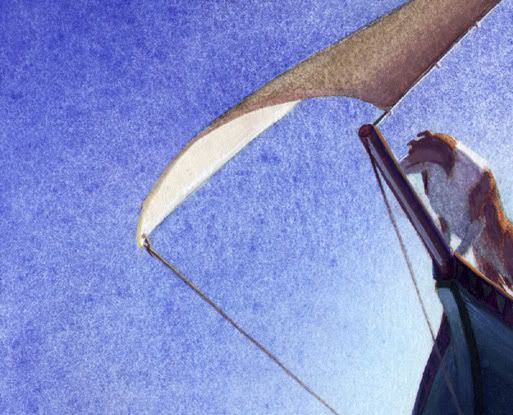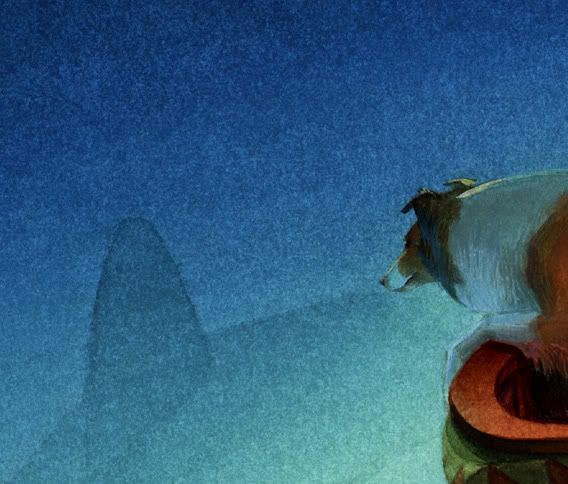The difference a board makes:
All the brands of illustration board that I've tried are perfectly serviceable surfaces for not-so-wet watercolor, for detailed painting, and gouache. Where the difference in brands becomes apparent is in the washes.
Now, in college I was sort of the "queen of the washes." This is not so impressive in these days of click and fill perfect CG gradients, but back then... well, let's just say that I may have had artistic lacks in other areas, but man could I do a controlled gradient in watercolor washes! The gradients were never perfect like CG, but to me, it was important that they were NOT perfect - that they had texture and variation to add richness to the finished work.
This is where I really like my Letramax illo board in particular. To demo the difference, here are a couple pieces from my senior student project. These are BIG paintings for me, about 18 x 30 inches.
"Ascent" done on my beloved Letramax:

"Dream Waters" done on Crescent illo board:

Close-ups of the washes showing the difference:


On the Letramax, the wash would flow on and if done VERY wet (as this one was) the pigment would marble in this beautiful fashion. If painted a little less wet, it would be more smooth. So lots of versatility. And yes, this wash was a one-shot deal, except for an added layer in the very dark areas once the first was dry.
The Crescent brand board, on the other hand, did not want to puddle and flow for that huge board-covering wash. So I resorted to layering washes, which led to a less "flowing" look. Perfectly wonderful board for the rest of the painting, though.
So you see, half my reputation as Wash Queen was built on the Letramax board!
 Author
Topic: [Tools of the Trade] - Watercolor (was: Artists Question and Answer) (Read 28557 times)
Author
Topic: [Tools of the Trade] - Watercolor (was: Artists Question and Answer) (Read 28557 times)